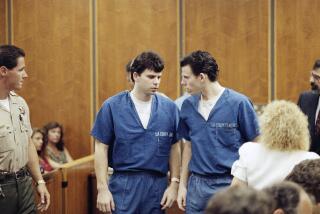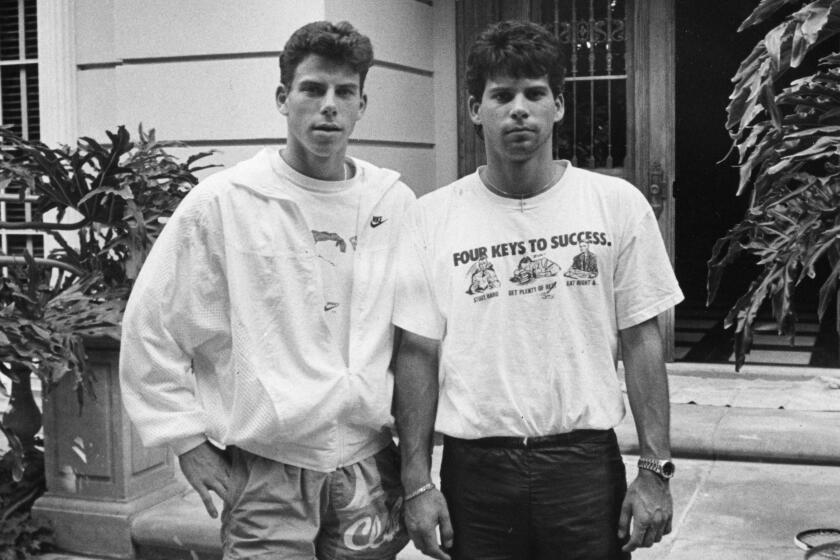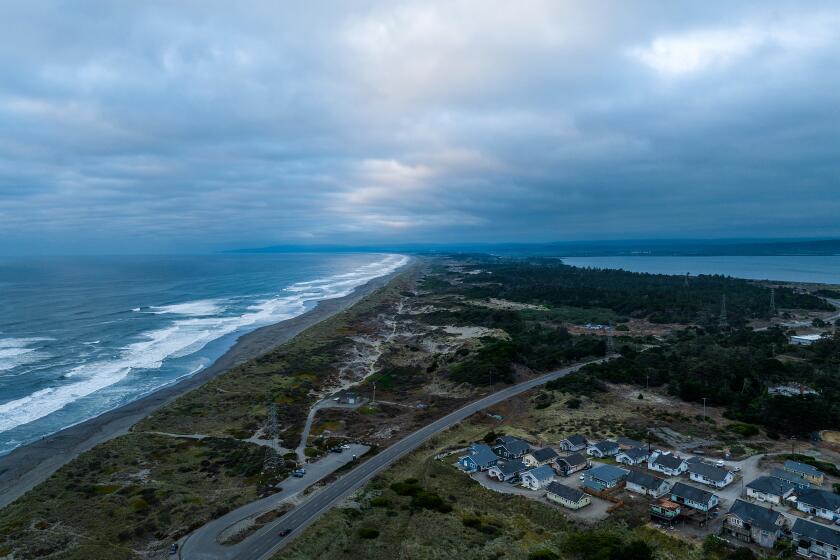DWP Chief Proposes Selling L.A. Stake in Coal-Burning Plant
As part of his ongoing effort to transform the Department of Water and Power into a competitive business, General Manager S. David Freeman is proposing to sell the city’s share of a massive coal-burning power plant in the Nevada desert and invest $1.7 billion in cleaner facilities in the Los Angeles Basin.
The new 10-year strategic plan approved by the city’s Water and Power Commission on Monday would mark a dramatic restructuring of the department’s power supply, weaning the city off older, more costly and polluting plants.
The department would make a projected $190-million profit by selling its share of the controversial Mohave Generating Station in Nevada, while also avoiding expenditures of $75 million to upgrade the facility to new environmental standards by 2001, officials said.
Freeman says his plan’s focus on rebuilding three local plants--Scattergood, Haynes and Valley--would ultimately cut consumer costs and increase reliability at a time when other areas of California face surging rates, power shortages and even brownouts.
“What we are planning is [to build] a whole new power plant at the site of the old one,” Freeman told the four commissioners Monday morning. “We’ll use the land, the infrastructure, the pipelines to the plant.”
He calls the 2000 Integrated Resource Plan “the most important item” since he began cost-cutting and layoffs two years ago, reducing the department’s debt by $2 billion.
Councilwoman Ruth Galanter, who chairs the committee that oversees the DWP, said the plan probably will be adopted by the City Council, but that some city staff object to selling the Mohave plant. She said the city makes a good profit marketing surplus power from the workhorse facility.
“Remember when San Francisco had that 103-temperature day?” said Galanter. “We made $5 million that day.”
Michael Gorfain, senior analyst for the city’s Office of Administrative Research and Services, said he needs more information from Freeman, but he has concerns about selling the DWP’s stake in the plant. “We are not convinced that you have to sell Mohave to fund the other improvements,” he said. “And because it’s sold to a private company, who will still operate it? How will it help the environment?”
The Mohave plant is the single largest source of sulfur dioxide pollution in the Southwest, and environmentalists say it is partly responsible for the haze over the Grand Canyon, about 75 miles away.
The DWP owns 20% of the facility, and must sell by September to get in on a deal struck by Southern California Edison Co. and Nevada Power Co., which are unloading their stakes to AES Corp. at a relatively high $600 per kilowatt the plant is capable of producing.
Although the DWP still gets far more power from a coal-burning facility in Utah, Freeman said the city should step away from such polluters when financially feasible.
“There is a smell of hypocrisy to say: ‘We’re not polluters. We get our power from a polluting plant in Nevada, but we’re clean,’ ” said Freeman.
Meanwhile, most city staff seems to support the rebuilding of the three Los Angeles plants, according to Galanter and Gorfain.
The Valley Generating Station would be complete in the spring of 2004, followed by Haynes in 2006 and Scattergood in 2008.
All three would cut nitrogen oxide emissions by 65% using new technology, Freeman said.
Although the plants are fueled by cleaner-burning natural gas, they are outdated and will become obsolete as environmental standards grow more strict. The new facilities will be more efficient, in part, by reusing excess heat that is now lost to the atmosphere.
The plan must pass the City Council and will go to Galanter’s Commerce, Energy and Natural Resources Committee on Aug. 1.
More to Read
Sign up for Essential California
The most important California stories and recommendations in your inbox every morning.
You may occasionally receive promotional content from the Los Angeles Times.










